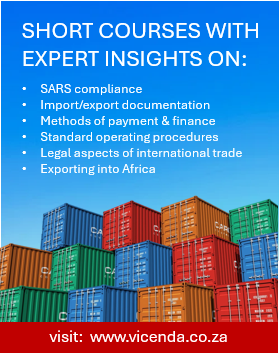Recent storms and excessive rain in certain parts of South Africa, which left homes and infrastructure in ruins, serve as another stark reminder of how vulnerable supply chains are to natural disasters. For logistics providers, the growing unpredictability of weather is fast becoming a factor that needs to be built into daily planning.
According to a new study published in the Environmental Development journal, the frequency and severity of floods and storms in South Africa have intensified dramatically over the past decade, with projections pointing to continued escalation. The result is not only localised damage, but significant knock-on effects for businesses reliant on timely deliveries, including retailers, manufacturers, and healthcare providers.
“Extreme weather can no longer be treated as a rare disruption,” says Leon Bruwer, managing director of sales for Sub-Saharan Africa at FedEx. “It’s something we’re seeing more regularly. The key to managing this rising risk lies in solid preparation which, increasingly, ties into digital readiness.”
In the US, FedEx has developed a robust digital weather contingency playbook that allows its operations teams to respond proactively rather than reactively. This approach proved its value during a severe winter storm in January 2024, which disrupted operations at the FedEx hub in Memphis. Despite the storm lasting longer than a similar event in 2023, FedEx network was able to recover twice as fast, thanks to predictive rerouting of packages before they reached the affected hub.
In South Africa, where infrastructure is already under strain, these capabilities are particularly relevant. For example, the severe weather disruptions in KZN storms in June have damaged roads and power lines across rural areas, cutting off access to several communities. For a company like FedEx, which serves over 220 countries and territories, having the ability to pre-empt and navigate such disruptions is a strategic advantage.
“Delivery expectations don’t stop when the weather turns,” says Bruwer. “Whether we’re delivering vital healthcare shipments or facilitating the transportation of e-commerce parcels to remote locations, our customers rely on us to keep going.”
Innovations such as SenseAware® deliver high visibility across shipments in near real-time, delivering full monitoring and tracking with an unprecedented degree of detail, including humidity, location and light exposure.
Businesses have visibility of their shipment from end-to-end, across networks of connected sensors collecting and sending data. To help them stay on track, alerts are sent out immediately if any negative incidents occur.
As extreme weather events become more frequent, Bruwer believes the logistics industry must shift its mindset from resilience to readiness. “We can’t change the forecast,” he says, “but we can change how we plan for it. At FedEx, we’re not merely reacting to climate disruption, we’re building the systems that enable us to deliver through it.”







